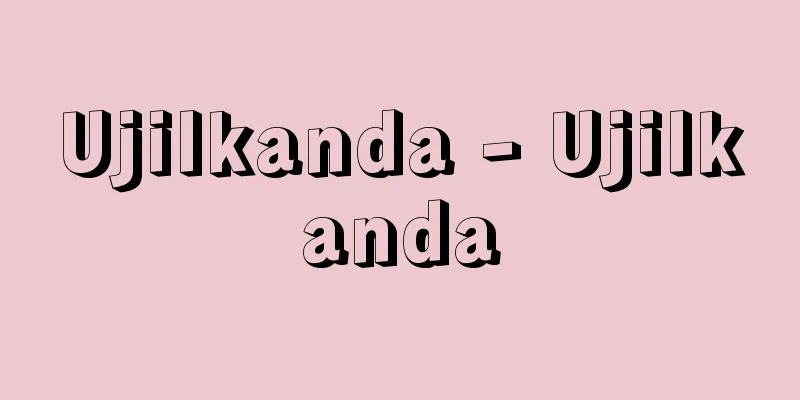Certificate of commendation

|
A certificate of merit given by a military commander to those who had distinguished themselves in battle. In the Nippon-Portuguese Dictionary, canjǒ is translated as a letter of praise, in other words, a letter praising a person. After the Northern and Southern Courts period, they were common and took the form of a migyosho (imperial letter), gonaisho (private letter), hanmotsu (bansho), shuinjo (vermilion seal letter), kokuinjo (black seal letter), etc. The shape was not consistent, and although origami and tategami (vertical paper) were also used, kirigami (paper cut out) was more common. It is thought that the reason for the use of small kirigami was that they were given during battles, sometimes even in the camp. The document records specific military achievements and praises the "unparalleled work, the most admirable," and concludes with the words "You should strive to be even more loyal." To give a specific example from a relatively early period, there is the letter of commendation (origami) from Asonuma Harutoki in 1333 (Genko 3/Shokei 2). This was given to Wada Nigito Nakatsugu, a vassal of Izumi Province, who participated in the attack on the Kusunoki clan at Kawachi Chihaya Castle by Asonuma Harutoki, a general of the Kanto side. The letter praises his military achievement of taking the enemy's head, stating, "After a battle in the field, you have taken his head. This is truly awe-inspiring." An example from the Muromachi period is the letter of commendation from Kamakura kubo Ashikaga Mochiuji in 1429 (Eikyo 1). This letter was addressed to Onozaki Echizen Saburo, praising Saburo's father who was killed in battle, and is known as the Imperial Letter of Impression. [Hiroko Kuroda] Source: Shogakukan Encyclopedia Nipponica About Encyclopedia Nipponica Information | Legend |
|
武将が戦功のあった者に対して与える賞状。『日葡(にっぽ)辞書』では、canjǒは人を褒美する文、すなわち、ある人を称賛する書状と訳している。南北朝時代以後に多く、御教書(みぎょうしょ)、御内書(ごないしょ)、判物(はんもつ)、朱印状(しゅいんじょう)、黒印状(こくいんじょう)などの形式をとった。形状は一定せず、折紙(おりがみ)、竪紙(たてがみ)もあるが、切紙(きりがみ)の場合が比較的多い。小形の切紙を用いたりしたのは、戦闘の間に、ときには陣中で授与されたりしたことによるためと考えられている。文書は具体的な戦功を記して「比類なきの働き、神妙の至り」と賞したのち、「弥(いよいよ)忠節を励むべし」といったことばで結んでいる。具体例をあげると、比較的早い時期のものとして1333年(元弘3・正慶2)の阿曽沼治時(あそぬまはるとき)感状(折紙)がある。これは、関東方の大将阿曽沼治時が河内千早(かわちちはや)城の楠木(くすのき)氏を攻めたとき、参戦した和泉(いずみ)国御家人(ごけにん)和田(にぎた)中次に与えたものであるが、それには「野臥(のぶせり)合戦を致し、頸(くび)を取り了(おわん)ぬ、尤(もっと)も神妙候」と、敵の首をとった戦功を賞している。室町時代の例としては1429年(永享1)鎌倉公方(くぼう)足利持氏(あしかがもちうじ)の感状がある。これは小野崎越前(えちぜん)三郎にあてたものであるが、三郎の父が合戦で討ち死にしたことを賞したもので、御感(ぎょかん)の御教書とよばれている。 [黒田弘子] 出典 小学館 日本大百科全書(ニッポニカ)日本大百科全書(ニッポニカ)について 情報 | 凡例 |
Recommend
Subjects - shinmin
〘 noun 〙 The people as subjects. The people of a m...
Lifeboat - Lifeboat
〘 noun 〙 (boat) = kyuumeitei (lifeboat) ※Anecdote ...
Iwai Island
An island in the southeastern part of Yamaguchi P...
Monotonic functions
A term that refers to both increasing and decreas...
Dried Rehmannia Root - Kanjio
...Their native habitat is unknown. [Yamazaki Kei...
Peyote - Peyote (English spelling)
Peyote is a plant containing alkaloids that grows...
Yurin
A prefecture-level city in the northernmost part ...
Wang Gao
...It consists of four volumes. It was compiled b...
Burdock root - Burdock root
A perennial plant of the Asteraceae family (APG c...
Neve, F.de (English spelling) NeveFde
… [history] Los Angeles originated as a small far...
vanner
… A primitive gravity separation method that uses...
Asago - Asago
This is the name of a former town (Asago-cho) in ...
Kinsuiga
...One was the Gaoliang River, which was brought ...
Accelerated Erosion
…Soil erosion that proceeds slowly in balance wit...
Midgut gland
The digestive organ of arthropods and mollusks. In...








![Nanyo [city] - Nanyo](/upload/images/67cc6acb31bcc.webp)
